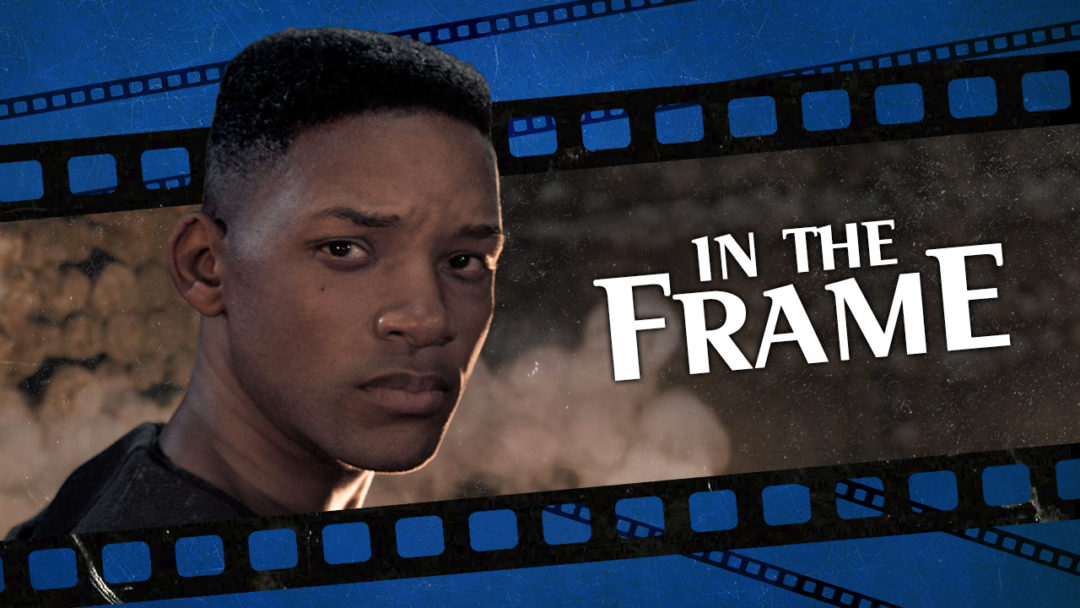Ang Lee’s Gemini Man displays a tension between past and present that goes beyond the obvious face-off between Will Smith and his younger, computer-generated self. Many of the film’s elements feel decidedly old-fashioned, perhaps because the pitch had been kicking around Hollywood since 1997, when it was going to be made by Top Gun and True Romance director Tony Scott. The film is saturated with ‘90s anxieties. It’s an action thriller about the fear of cloning anchored by the end of the Cold War. Think of it as Gattaca by way of GoldenEye directed by John Woo.
This sort of project would always have required a movie star performance. The original plan was for the lead character and his doppelganger to be played by two different actors, with Harrison Ford and Chris O’Donnell originally imagined in the roles. Mel Gibson and Nicolas Cage were also suggested, which provides a real snapshot of the times.
When Gemini Man finally arrived in cinemas, it starred Will Smith. It’s a fitting role for an actor who has struggled to acclimatize to a changing Hollywood landscape that values intellectual property over star power. This is a new world where Chris Hemsworth can be part of a multi-billion dollar franchise machine but cannot open a mid-budget adult-skewing film like Rush or Blackhat under his own power.

Will Smith in Gemini Man from Paramount Pictures, Skydance and Jerry Bruckheimer Films.
Smith’s last couple of major studio star vehicles – After Earth in 2013 and Focus in 2015 – both failed to set the box office alight. Smith then tried to move sideways to integrate himself into Hollywood’s modern sensibilities. In 2016, he wed himself to an established intellectual property by taking the role of Deadshot in Suicide Squad. The following year, he headlined Netflix’s first blockbuster, Bright.
The live-action remake of Aladdin gave Smith a new niche by blending modern Hollywood’s fixation on recycling established intellectual property with a role that required a bona fide movie star. It is Smith’s most financially successful movie, and his name appears before the title of the film in the billing block, but not at the top of the poster.
By contrast, Gemini Man’s poster features his name twice above the title, literally doubling down on his star power. This gets at one of the more interesting dynamics at play over the course of the otherwise fairly generic and fairly bland ‘90s action movie throwback. Gemini Man shows the startling contrast between Hollywood’s past and its present.
Gemini Man is a movie built around spectacle. It is a technological showcase. Had the film been produced in the ‘90s, the studio would have had to cast two actors in the central role: one as retiring hitman Henry Brogan and another as his younger clone, Junior. However, advances in technology mean that only one actor is required. Smith plays the world-weary veteran, while his eager young replacement is entirely computer-generated, based on models of the actor layered over footage recorded on a motion-capture stage. The result is a film that has one foot in two very different styles of movie-making and is consciously pitting them against one another.
Gemini Man repeatedly invites comparisons between Will Smith and his character. Henry is treated as something of a celebrity within the world of the film. When he meets a Russian source (Ilia Volok), the informant is starstruck and tells Henry, “I’m a big fan.” He eagerly discusses the film’s earlier action sequences, his knowledge apparently derived from a tracking device surreptitiously placed on Henry by his former employer.
The film’s plot centers on a plan to mass-produce factory-designed replacements for ageing veterans, which is framed as a metaphor for studio film production. The sinister Clay Verris (Clive Owen) trains his mercenaries in what looks like a studio backlot, a generic street built in the middle of nowhere. Drones record the action from exciting angles as Junior takes in the spectacle and enjoys an ice cream cone.

When the maneuver is complete, an off-screen voice directs the soldiers and actors to move back to “first positions” so they can replay the scene again. By the end of the film, this dress rehearsal plays out in more elaborate detail. The climax finds the same soldiers practicing their maneuvers on a real street, but it feels like just another action set piece.
Clay attempts to justify his desire to manufacture a replacement for an old star who can no longer reliably deliver the hits. “This was all inspired by you,” Clay tells Henry. Henry has been rendered redundant by his own success, and Clay’s desire to replicate and escalate that success has led to something monstrous.
It is also a very pointed moment. Will Smith transitioned from television actor to movie star status with a major role in Roland Emmerich’s Independence Day, a film that pushed the boundaries of spectacle in blockbuster cinema. Its DNA is present in every city-leveling CGI-driven climax. There were many problems with the film’s belated sequel, Independence Day: Resurgence, but at least one of them can be traced to the ballooning stakes of the blockbuster climax. Even the escalated global stakes of Resurgence seem almost quaint compared to the spectacle of Avengers: Infinity War and Avengers: Endgame. What was once earth-shattering is now mundane.
There’s a certain tragedy to Gemini Man’s casting of Will Smith, one of the last leading men in an industry where movie stars are increasingly squeezed out by computer-generated spectacle. The past few years have even seen speculation that actors might be rendered completely redundant by technological advances since CGI can already bring the dead to life on film. Gemini Man just literalizes that anxiety, confronting one of the few remaining movie stars with an uncanny digital replacement.





